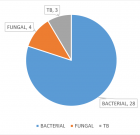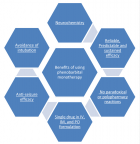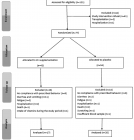Abstract
Review Article
Transference and countertransference are linked to placebo-nocebo effects and they are an auxiliary resource of unparalleled value in general medicine: Recommendations for general practitioners
Jose Luis Turabian*
Published: 28 February, 2020 | Volume 4 - Issue 1 | Pages: 001-006
Psychological phenomena of the doctor-patient relationship influence the therapeutic process. Among these phenomena are the transference (the emotions of the patient towards the doctor), and the countertransference (the emotional reactions of the doctor towards the patient). Doctor and patient are within an interactive relationship in a conscious and unconscious way: the patient is influenced by the doctor, and vice versa. Doctor is solely responsible for the control of transference and countertransference, since patients do not have a conscious perception of these phenomena. In general medicine the transference/countertransference have connotations of placebo effect and nocebo. The challenge of the doctor-patient relationship for the doctor is to realize the transference and countertransference phenomena and use them to achieve placebo effects and minimize the nocebo, and also respecting the needs of both parties, so that to improve the quality of clinical practice. Under these conditions, transference and countertransference are auxiliary resources of unparalleled value.
Read Full Article HTML DOI: 10.29328/journal.apmh.1001010 Cite this Article Read Full Article PDF
Keywords:
Communication; Physician patient relations; Psychotherapeutic processes; Transference (Psychology); Countertransference (Psychology); Placebo effect; Nocebo effect
References
- Turabian JL. Doctor-Patient Relationship as Dancing a Dance. Journal of Family Medicine. 2018; 1: 1-6.
- Turabian JL. Psychology of doctor-patient relationship in general medicine. Arch Community Med Public Health. 2019; 5: 062-068.
- Beck RS, Daughtridge R, Sloane PD. Physician-patient communication in the primary care office: a systematic review. J Am Board Fam Pract. 2002; 15: 25-38. PubMed: https://www.ncbi.nlm.nih.gov/pubmed/11841136
- Matusitz J, Spear J. Effective doctor-patient communication: an updated examination. Soc Work Public Health. 2014; 29: 252-266. PubMed: https://www.ncbi.nlm.nih.gov/pubmed/24802220
- Reyes Ortiz CA, Gheorghiu S, Mulligan T. Forgetting psychological phenomena in the elderly doctor-patient relationship. Colombia Médica. 1998; 29.
- Evers AWM, Colloca L, Blease C, Annoni M, Atlas LY, et al. Implications of Placebo and Nocebo Effects for Clinical Practice: Expert Consensus. Psychother Psychosom. 2018; 87: 204-210. PubMed: https://www.ncbi.nlm.nih.gov/pubmed/29895014
- Jung CG. The practice of psychotherapy. Essays on the psychology of the transference and other subjects. New York: Bollingen Foundation Inc. 1954.
- Adler HM. The Sociophysiology of Caring in the Doctor-patient Relationship. J Gen Intern Med. 2002; 17: 874-881. PubMed: https://www.ncbi.nlm.nih.gov/pubmed/12406360
- Strachey J. The Standard Edition of the Complete Psychological Works of Sigmund Freud, Volume XII (1911-1913): The Case of Schreber, Papers on Technique and Other Works. ii-vii. The Hogarth Press and the Institute of Psycho-analysis, London. 1958.
- Balint M, Hunt J, Joyce D, Marinker M, Woodcock J. Treatment or diagnosis. A study of repeat prescriptions in general practice. London: Tavistock Publications. 1984.
- Turabián Fernández JL, Pérez Franco B. The concept of treatment in familiy medicine: A contextualised and contextual map of a city hardly seen. Aten Primaria .2010; 42: 253-254. PubMed: https://www.ncbi.nlm.nih.gov/pubmed/20207448
- Turabian JL. Doctor-Patient Relationship in Pharmacological Treatment: Discontinuation and Adherence. COJ & Res. 2018; 1.
- Turabian JL. The placebo effect from the biopsychosocial perspective of general medicine: non-effective interventions that are, in fact, effective. Int J Fam Commun Med. 2019; 3: 16-21.
- Cousins N. Anatomy of an illness as perceived by the patient. Reflections on healing and regeneration. New York: W.W. Norton & Company. 1979.
- Van Roy K, Vanheule S, Debaere V, Inslegers R, Meganck R, et al. A Lacanian view on Balint group meetings: a qualitative analysis of two case presentations. BMC Family Practice. 2014; 15: 49. PubMed: https://www.ncbi.nlm.nih.gov/pubmed/24655833
- Urbina-Méndez R, Hernández-Vargas CI, Hernández-Torres I, Fernández-Ortega MA, Irigoyen-Coria A. Psychodynamic Analysis of Transference and Countertransference in the Formation of Family Physicians in Mexico. Aten Fam. 2015; 22: 58-61.
- Turabian JL. Interpretation of the Reasons for Consultation: Manifest and Latent Content. the Initiation of the Diagnostic Process in General Medicine. Archives of Community and Family Medicine. 2019; 2.
- Turabian JL. Symptomatic Acts. A Type of Guidance Signs Not to Get Lost in the Forest of the Clinic in General Medicine. Presentation and Conceptualization from Two Cases. J Case Rep Med Spec. 2019; 1-10.
- Zinn WM. Transference phenomena in medical practice: being whom the patient needs. Ann Intern Med. 1990; 113: 293-298. PubMed: https://www.ncbi.nlm.nih.gov/pubmed/2375565
- Freedman N, Lasky R, Webster J. The ordinary and the extraordinary countertransference. J Am Psychoanal Assoc. 2009; 57: 303-331. PubMed: https://www.ncbi.nlm.nih.gov/pubmed/19516054
- McNally PJ, Charlton R, Ratnapalan M, Dambha-Miller H. Empathy, transference and compassion. JR Soc Med. 2019; 112: 420-423. PubMed: https://www.ncbi.nlm.nih.gov/pubmed/31609173
- Suárez F. Around the idea of "situation diagnosis". 2006.
- Van Marle HJ. The patient rules; the power of transference in the doctor-patient relationship. Ned Tijdschr Geneeskd. 2016; 160: D1219. PubMed: https://www.ncbi.nlm.nih.gov/pubmed/28000579
- Goldberg PE. The physician-patient relationship: three psichodinamic Concepts that can be applied to primary care. Arch Fam Med. 2000; 9: 1164-1168. PubMed: https://www.ncbi.nlm.nih.gov/pubmed/11115224
- Marcus ER. Transference and countertransference to medication and its implications for ego function. J Am Acad Psychoanal Dyn Psychiatry. 2007; 35: 211-218. PubMed: https://www.ncbi.nlm.nih.gov/pubmed/17650974
- Cooper SH. An elusive aspect of the analyst's relationship to transference. Psychoanal Q. 2010; 79: 349-380. PubMed: https://www.ncbi.nlm.nih.gov/pubmed/20496836
- Sánchez MA. Thought disorders and psychosomatic diseases. Revista Medicina. 2006; 28: 161-179.
- Chen PA, Cheong JH, Jolly E, Hirsh Elhence, Wager TD, et al. Socially transmitted placebo effects. Nat Hum Behav. 2019; 3: 1295-1305. PubMed: https://www.ncbi.nlm.nih.gov/pubmed/31636406
- Deligianni C, Mitsikostas DD. Nocebo in Headache Treatment. In: Mitsikostas D., Benedetti F. (eds) Placebos and Nocebos in Headaches. Headache. Springer, Cham. 2019.
- Kirsch I. Placebo psychotherapy: synonym or oxymoron? J Clin Psychol. 2005; 61: 791-803.
- Luban-Plozza B. Psychological aspects of drugs. Soz Praventivmed. 1980; 25: 56-60.
- Balint E, Norell JS. Six minutes for the patient: interactions in general practice consultations. London: Tavistock Publications. 1973.
- Nolan T. The placebo effect in general practice. InnovAiT. 2019.
- Mitsikostas DD, Deligianni CI. Placebo and Nocebo Effects. In: Mitsikostas D., Paemeleire K. (eds) Pharmacological Management of Headaches. Headache. Springer, Cham. 2016.
- Chavarria V, Vian J, Pereira C, Data-Franco J, Fernandes BS, et al. The Placebo and Nocebo Phenomena: Their Clinical Management and Impact on Treatment Outcomes. Clin Ther. 2017; 39: 477-486. PubMed: https://www.ncbi.nlm.nih.gov/pubmed/28237673
- Testa M, Rossettini G. Enhance placebo, avoid nocebo: How contextual factors affect physiotherapy outcomes. Man Ther. 2016; 24: 65-74. PubMed: https://www.ncbi.nlm.nih.gov/pubmed/27133031
- Turabian JL, Moreno-Ruiz S. The fable of the pine and the palm tree: the two extremes. Strategies to maximize the placebo effect and minimize the nocebo effect in primary health care. Ment Health Addict Res. 2016; 1: 44-46.
Figures:

Figure 1

Figure 2
Similar Articles
-
Transference and countertransference are linked to placebo-nocebo effects and they are an auxiliary resource of unparalleled value in general medicine: Recommendations for general practitionersJose Luis Turabian*. Transference and countertransference are linked to placebo-nocebo effects and they are an auxiliary resource of unparalleled value in general medicine: Recommendations for general practitioners. . 2020 doi: 10.29328/journal.apmh.1001010; 4: 001-006
-
Psychological phenomena in the doctor- Elderly patient relationshipJose Luis Turabian*. Psychological phenomena in the doctor- Elderly patient relationship. . 2020 doi: 10.29328/journal.apmh.1001013; 4: 019-023
-
Implications on mental health by the coronavirus disease 2019 (COVID-19) pandemic: The role of general practitionerJose Luis Turabian*. Implications on mental health by the coronavirus disease 2019 (COVID-19) pandemic: The role of general practitioner. . 2020 doi: 10.29328/journal.apmh.1001016; 4: 035-041
-
Psychotropic drugs prescription block the positive effects of the doctor-patient communication and relationshipJose Luis Turabian*. Psychotropic drugs prescription block the positive effects of the doctor-patient communication and relationship. . 2021 doi: 10.29328/journal.apmh.1001029; 5: 014-017
-
Mapping the Psychosocial: Introducing a Standardised System to Improve Psychosocial Understanding within Mental HealthMatthew Bretton Oakes*. Mapping the Psychosocial: Introducing a Standardised System to Improve Psychosocial Understanding within Mental Health. . 2024 doi: 10.29328/journal.apmh.1001051; 8: 012-019
Recently Viewed
-
Anesthesia Considerations in Scoliosis Surgery - A Clinical CommunicationAnagha Warik,Abinav Sarvesh*. Anesthesia Considerations in Scoliosis Surgery - A Clinical Communication. Int J Clin Anesth Res. 2025: doi: 10.29328/journal.ijcar.1001030; 9: 023-025
-
Betty Neuman System Model: A Concept AnalysisAdnan Yaqoob*, Rafat Jan, Salma Rattani and Santosh Kumar. Betty Neuman System Model: A Concept Analysis. Insights Depress Anxiety. 2023: doi: 10.29328/journal.ida.1001036; 7: 011-015
-
Cytokine Modulatory Effects of Sesamum Indicum Seeds Oil Ameliorate Mice with Experimental Autoimmune EncephalomyelitisMohammad Reza Javan*,Mohammad Reza Zamani,Saeed Aslani,Ghader Dargahi Abbasabad,Masoud Beirami Khalaj,Hamed Serati-Nouri. Cytokine Modulatory Effects of Sesamum Indicum Seeds Oil Ameliorate Mice with Experimental Autoimmune Encephalomyelitis. Arch Asthma Allergy Immunol. 2017: doi: 10.29328/journal.aaai.1001008; 1: 086-093
-
Optimizing Treatment of Depression, Trauma, and Anxiety Disorders through Neurophysiological InterventionsKees Blasé*. Optimizing Treatment of Depression, Trauma, and Anxiety Disorders through Neurophysiological Interventions. Insights Depress Anxiety. 2025: doi: 10.29328/journal.ida.1001046; 9: 027-029
-
Clinical Severity of Sickle Cell Anaemia in Children in the Gambia: A Cross-Sectional StudyLamin Makalo,Samuel A Adegoke,Stephen J Allen,Bankole P Kuti,Kalipha Kassama,Sheikh Joof,Aboulie Camara,Mamadou Lamin Kijera,Egbuna O Obidike. Clinical Severity of Sickle Cell Anaemia in Children in the Gambia: A Cross-Sectional Study. J Hematol Clin Res. 2025: doi: 10.29328/journal.jhcr.1001033; 9: 001-006
Most Viewed
-
Feasibility study of magnetic sensing for detecting single-neuron action potentialsDenis Tonini,Kai Wu,Renata Saha,Jian-Ping Wang*. Feasibility study of magnetic sensing for detecting single-neuron action potentials. Ann Biomed Sci Eng. 2022 doi: 10.29328/journal.abse.1001018; 6: 019-029
-
Evaluation of In vitro and Ex vivo Models for Studying the Effectiveness of Vaginal Drug Systems in Controlling Microbe Infections: A Systematic ReviewMohammad Hossein Karami*, Majid Abdouss*, Mandana Karami. Evaluation of In vitro and Ex vivo Models for Studying the Effectiveness of Vaginal Drug Systems in Controlling Microbe Infections: A Systematic Review. Clin J Obstet Gynecol. 2023 doi: 10.29328/journal.cjog.1001151; 6: 201-215
-
Causal Link between Human Blood Metabolites and Asthma: An Investigation Using Mendelian RandomizationYong-Qing Zhu, Xiao-Yan Meng, Jing-Hua Yang*. Causal Link between Human Blood Metabolites and Asthma: An Investigation Using Mendelian Randomization. Arch Asthma Allergy Immunol. 2023 doi: 10.29328/journal.aaai.1001032; 7: 012-022
-
An algorithm to safely manage oral food challenge in an office-based setting for children with multiple food allergiesNathalie Cottel,Aïcha Dieme,Véronique Orcel,Yannick Chantran,Mélisande Bourgoin-Heck,Jocelyne Just. An algorithm to safely manage oral food challenge in an office-based setting for children with multiple food allergies. Arch Asthma Allergy Immunol. 2021 doi: 10.29328/journal.aaai.1001027; 5: 030-037
-
Impact of Latex Sensitization on Asthma and Rhinitis Progression: A Study at Abidjan-Cocody University Hospital - Côte d’Ivoire (Progression of Asthma and Rhinitis related to Latex Sensitization)Dasse Sery Romuald*, KL Siransy, N Koffi, RO Yeboah, EK Nguessan, HA Adou, VP Goran-Kouacou, AU Assi, JY Seri, S Moussa, D Oura, CL Memel, H Koya, E Atoukoula. Impact of Latex Sensitization on Asthma and Rhinitis Progression: A Study at Abidjan-Cocody University Hospital - Côte d’Ivoire (Progression of Asthma and Rhinitis related to Latex Sensitization). Arch Asthma Allergy Immunol. 2024 doi: 10.29328/journal.aaai.1001035; 8: 007-012

If you are already a member of our network and need to keep track of any developments regarding a question you have already submitted, click "take me to my Query."
















































































































































